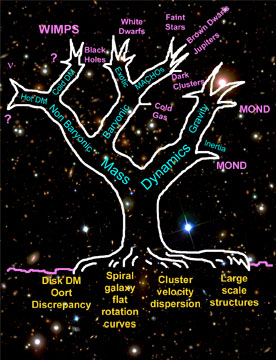ASTR 333/433 - Dark Matter
| Relevant texts | |||
|
Fall 2013 MT 4:00-5:15 PM Sears 552
Prof. Stacy McGaugh
office hours |

|
Galactic Dynamics Binney & Tremaine B&T errata
Galactic Astronomy
Galactic Astronomy
Galaxies in the Universe
|
Galaxy Formation & Evolution Mo, van den Bosch & White
Particle Dark Matter
Modern Cosmological
The Dark Matter Problem | (on reserve) |
